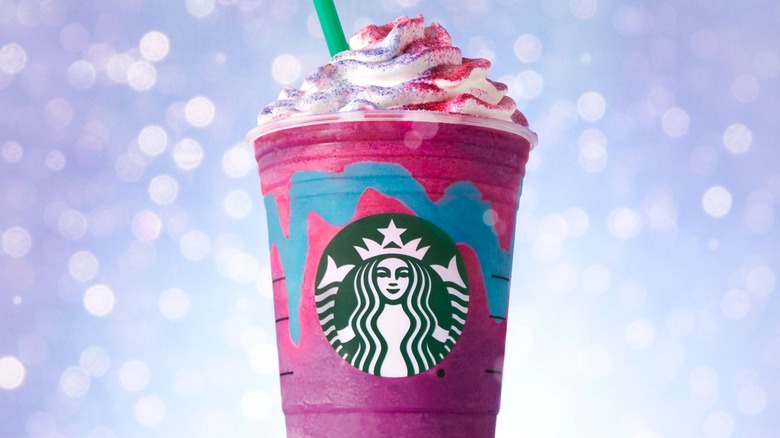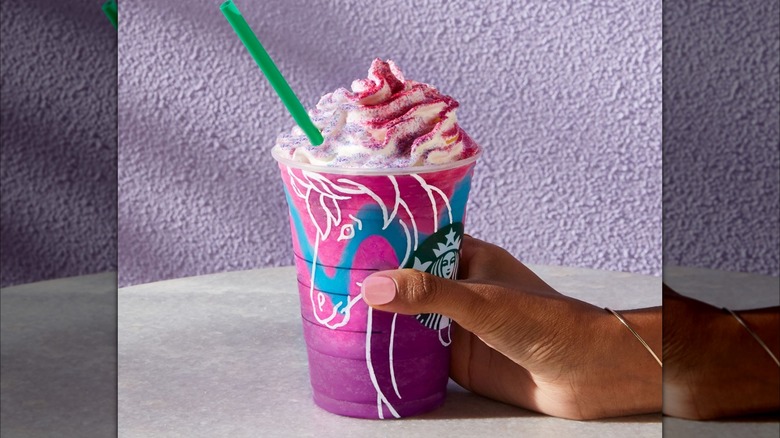Whatever Happened To Starbucks' Unicorn Frappuccino?
The "Unicorn food," era now seems like a distant memory, a brief collective frenzy when the online world was obsessed with rainbow colored bagels, and no item defined that era like the Starbucks' Unicorn Frappuccino. The sugar-drenched trend ironically started with a health and wellness blogger who was using natural dyes like beetroot to add color to food, but it quickly spun out into cakes, ice creams, and lattes that seemed more fitting for the exuberant and colorful displays. It was the quintessential social-media-driven food hype explosion, with the products driven more by aesthetics than actual taste. Brands were quick to jump on board the fad, and Starbucks' frap, which used sweet pink powder, mango syrup, and sour blue drizzle to create the effect, became, by far, the most popular. It was a limited time product, with the promotion running only five days, and after it was gone we never saw it again. So why didn't such a popular product ever get a comeback?
There isn't one clear answer, but it seems to be a combination of a few factors. The first is that the Unicorn Frappuccino was notoriously difficult for baristas to make, and the second is that it apparently just didn't taste very good. The Unicorn Frappuccino was credited with boosting Starbucks sales significantly during its run, and more "creative," drinks were to follow, but the company would choose to debut new creations each time instead of returning to the unicorn original.
Starbucks' Unicorn Frappuccino was popular but saw a quick backlash
One thing people jump to when trying to explain why the Starbucks Unicorn Frappuccino never came back is that the chain was sued by a Brooklyn cafe. The suit claimed Starbucks' product was a rip-off of a latte they unveiled months earlier, and which also saw big popularity on social media. However it's not clear anything ever came from the lawsuit, and Starbucks claimed the unicorn trend was general enough to not be infringement on one cafe's creation. The more likely explanation is just that the Unicorn Frappuccino was far too much work for a product that was little more a flashy social media bauble. As soon as the Frappuccino launched, baristas took to social media to detail the frustration and mess of making the complicated drink, and encouraged customers to stop ordering it. Reviews from both fans and professionals were also mostly bad, with complaints over its incredibly sweet flavor, and one Washington Post reviewer saying it tasted like "sour birthday cake and shame."
Starbucks plans for more Instagram-worthy drinks didn't last long after this. Follow-ups like the Zombie Frappuccino and peach-and-creme Crystal Ball Frappuccino were failures, and by the next year the company was telling customers it was cutting back on limited-time offerings in favor of expanding its regular menu. Starbucks' flirtation with social-media bait may have been successful at first, but the novelty wore off quickly, the strategy was abandoned, and the never-beloved Unicorn Frappuccino was one of the casualties.

